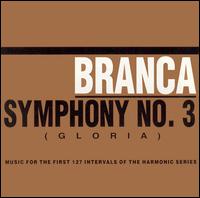Piano Sounds Good
The grand piano and the Mid-Side (MS) recording technique work well together. The beautiful sounds coming from the soundboard of the piano can be recorded better than any other technique I've come across. When I get the chance I am going to practice this technique. The combination of a figure 8, an omni, and an inverted figure 8 create an awesome stereo image. Exploring ambisonic techniques may also be a possibility in the future.
The sound system used to play Glenn Branca and Robert Ashley did not create an awesome stereo experience, but did provide for some intense listening. A fellow student said the experience should have been more intense, through an increase in the overall dynamic level. Branca's 3rd Symphony, which used electric keyboards, bowed electric guitars and all 127 intervals of the overtone series was more intellectually stimulating to me than Robert Ashley's tape piece.

Branca's work was expansive and dynamic. It had this sense of motion that I knew would eventually lead to a climax, but it always seemed a long way off. The motion felt like circle work. I felt like the music was returning to the same spot, but at the same time, I was aware that it wasn't the same. Ultimately I just wanted the climax to be reached and result in a Pink Floyd style driving bass and drum groove. Thus, the pounding drums that brought the work to its climax left me wanting more than a slowly dying composition. The instrumentation and the use of the overtone series did result in some interesting ambiance and harmony.
The most harmonious chord was Gordon Monro's quest in his generative artwork piece 'Evochord'. 'Evochord' is an installation that uses a genetic algorithm to evolve a harmonious chord. Therefore Monro's presentation was particularly relevant to second year algorithmic composition studies. However, Monro's obvious mathematical background is a big advantage in properly combining algorithms with music. The heavily weighted mathematical element of Monro's works had a slight alienating effect on me, but regardless of this, I was impressed by the interesting stuff that can be created in this aspect of musical composition.
Once I understand the general architecture and concepts of SuperCollider (SC), I am looking forward to the interesting stuff that I may be able to create. Firstly, I need to understand nodes, which are objects made up of synths and groups (bunch of synths). Nodes are formed in trees. Unit Generators (UGs) are important as they create the synths. Audio buses are signal paths, and Control buses are paths for controlling signals, like the black cords in Max.
REFERENCES
Grice, David. 2006. Mid-side Technique. Tutorial presented at the Electronic Music Unit, University of Adelaide, 14 March.
Haines, Christian. 2006. Introduction to SuperCollider (2). Tutorial presented at the Electronic Music Unit, University of Adelaide, 16 March.
Harris, David. 2006. No Title. Workshop presented at the Electronic Music Unit, EMU Space, University of Adelaide, 16 March.
The sound system used to play Glenn Branca and Robert Ashley did not create an awesome stereo experience, but did provide for some intense listening. A fellow student said the experience should have been more intense, through an increase in the overall dynamic level. Branca's 3rd Symphony, which used electric keyboards, bowed electric guitars and all 127 intervals of the overtone series was more intellectually stimulating to me than Robert Ashley's tape piece.

Branca's work was expansive and dynamic. It had this sense of motion that I knew would eventually lead to a climax, but it always seemed a long way off. The motion felt like circle work. I felt like the music was returning to the same spot, but at the same time, I was aware that it wasn't the same. Ultimately I just wanted the climax to be reached and result in a Pink Floyd style driving bass and drum groove. Thus, the pounding drums that brought the work to its climax left me wanting more than a slowly dying composition. The instrumentation and the use of the overtone series did result in some interesting ambiance and harmony.
The most harmonious chord was Gordon Monro's quest in his generative artwork piece 'Evochord'. 'Evochord' is an installation that uses a genetic algorithm to evolve a harmonious chord. Therefore Monro's presentation was particularly relevant to second year algorithmic composition studies. However, Monro's obvious mathematical background is a big advantage in properly combining algorithms with music. The heavily weighted mathematical element of Monro's works had a slight alienating effect on me, but regardless of this, I was impressed by the interesting stuff that can be created in this aspect of musical composition.
Once I understand the general architecture and concepts of SuperCollider (SC), I am looking forward to the interesting stuff that I may be able to create. Firstly, I need to understand nodes, which are objects made up of synths and groups (bunch of synths). Nodes are formed in trees. Unit Generators (UGs) are important as they create the synths. Audio buses are signal paths, and Control buses are paths for controlling signals, like the black cords in Max.
REFERENCES
Grice, David. 2006. Mid-side Technique. Tutorial presented at the Electronic Music Unit, University of Adelaide, 14 March.
Haines, Christian. 2006. Introduction to SuperCollider (2). Tutorial presented at the Electronic Music Unit, University of Adelaide, 16 March.
Harris, David. 2006. No Title. Workshop presented at the Electronic Music Unit, EMU Space, University of Adelaide, 16 March.
Monro, Gordon. 2006. Generative Artworks. Presentation presented at the Electronic Music Unit, EMU Space, University of Adelaide, 16 March.


0 Comments:
Post a Comment
<< Home